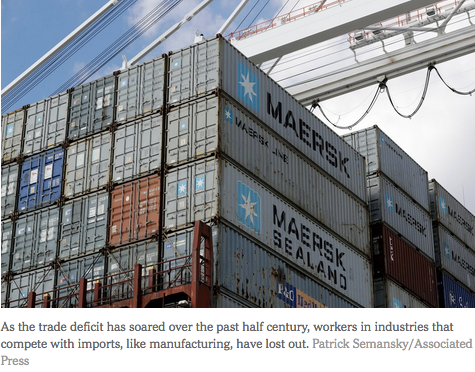Economists’ standard explanation of international trade says that rich countries like the United States will export capital, of which they have a lot, lending to poorer nations that have little capital but a lot of cheap labor. These poor countries, in turn, will invest the borrowed money in American-made machines for factories in which to employ their workers. So the lending will generate exports for the United States — building a trade surplus.
Most developed nations adhere to this pattern most of the time. The European Union now has a current account surplus. If it weren’t for the United States, so would the G7 group of major industrialized countries. But since 1980, the United States has found itself mostly on the borrowing end of the deal. It has used the foreign capital to finance investment at home, racking up huge trade deficits along the way.
Some economists will argue that the trade deficit is ultimately irrelevant if there is sufficient money coming in from abroad to pay for it at a reasonable interest rate. So what if China owns a ton of Treasury bonds? Even fears that it might dump them to hurt the United States ignore that China has little incentive to do that. It would amass enormous losses, too.
But it is a mistake to ignore the wounds caused by persistent trade imbalances on American workers.




